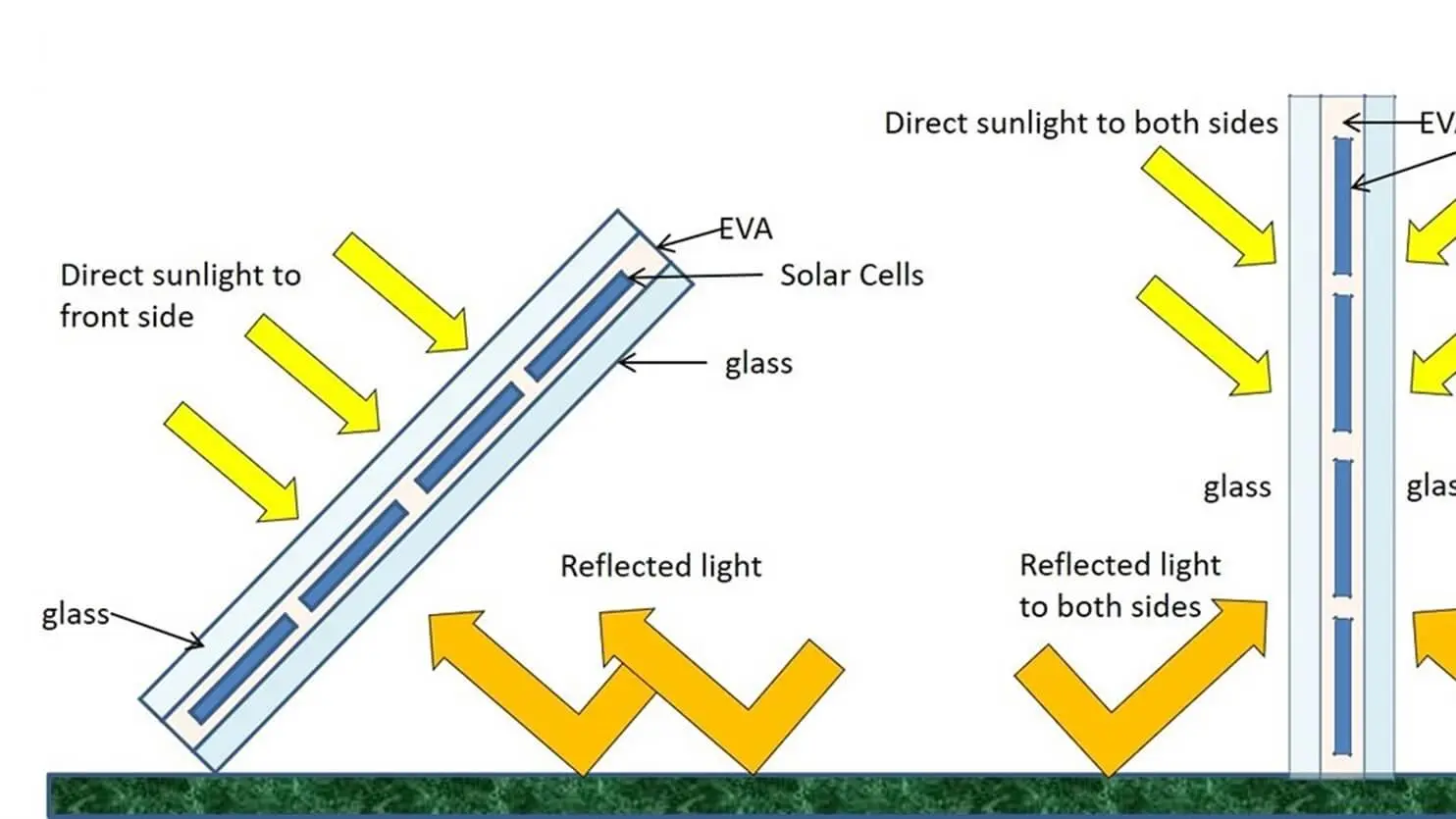Table of Contents
- What are Bifacial Solar Panels?
- How Do Bifacial Solar Panels Work?
- Benefits of Bifacial Solar Panels
- Costs of Different Bifacial Solar Panels Available in the Market
- Factors Affecting Bifacial Panel Performance
- Applications of Bifacial Solar Panels
- Evaluating the Cost-effectiveness of Bifacial Panels
- Conclusion
As the world embraces renewable energy, solar power has emerged as a leading source of clean electricity. With the growing demand for more efficient solar panels, innovative technologies have been developed to maximize energy generation. One such advancement is the utilization of bifacial solar panels. In this blog post, we will explore the concept, working principles, benefits, performance factors, and applications of bifacial solar panels. We will also discuss the cost-effectiveness of these panels and evaluate their viability in Pakistan.

What are Bifacial Solar Panels?
Bifacial solar panels are advanced photovoltaic modules designed to capture sunlight from both the front and back surfaces. Unlike traditional solar panels, which only utilize the front side for energy generation, bifacial panels make use of both sides to increase overall efficiency. These panels feature a transparent front side and a rear side that can absorb and convert sunlight into electricity.
How Do Bifacial Solar Panels Work?
Bifacial solar panels work by leveraging the ability to collect sunlight from multiple angles and sources. When sunlight strikes the front side of the panel, the photovoltaic cells absorb and convert it into electrical energy as usual. Simultaneously, the rear side of the panel captures the sunlight reflected from the ground, nearby structures, and surrounding surfaces. The additional light absorbed by the backside further contributes to the overall power output of the panel.

Benefits of Bifacial Solar Panels
- Enhanced Energy Generation: Bifacial panels can generate more electricity compared to traditional panels, thanks to their ability to capture light from both sides. This leads to increased energy production and higher overall system efficiency.
- Improved Performance in Varied Conditions: Bifacial panels perform well in diverse environments, including diffuse light conditions and areas with high albedo, such as snowy or sandy regions. Their ability to utilize reflected light makes them suitable for installations in such locations.
- Optimized Land Usage: Bifacial panels make efficient use of available space by capturing sunlight from both sides. This allows for higher power density and more flexibility in system design, making them ideal for installations where land availability is limited.
Costs of Different Bifacial Solar Panels Available in the Market
The cost of bifacial solar panels varies depending on factors such as brand, manufacturing technology, and power output. It’s essential to consider the upfront investment, long-term benefits, and return on investment when evaluating the cost-effectiveness of these panels. It is advisable to compare different suppliers and their offerings to find the best balance between cost and performance. However, below is the estimated price for bifacial solar panels.
The average price of bifacial solar panels in Pakistan is Rs. 56,583. The minimum price is Rs. 22,800 and the maximum price is Rs. 66,000. The price of bifacial solar panels varies depending on the brand, power output, and warranty.
Here are some examples of bifacial solar panels and their prices in Pakistan:
- Canadian Solar 360W Poly PERC: Rs. 35,840
- SunEdison Silvantis Solar Panel: Rs. 41,500
- Jinko Solar Panel 250 Watt Poly: Rs. 31,500
- Trina 485w Bifacial solar panel: Rs. 65,000
When choosing bifacial solar panels, it is important to consider the following factors:
- Power output: The power output of a bifacial solar panel is measured in watts. The higher the power output, the more electricity the panel will generate.
- Warranty: The warranty of a bifacial solar panel is the length of time that the manufacturer will repair or replace the panel if it fails.
- Brand: There are many different brands of bifacial solar panels available. It is important to choose a brand that has a good reputation and a long history of manufacturing quality panels.
Bifacial solar panels are a great option for homeowners and businesses who want to generate their own electricity. They are more efficient than traditional solar panels and can generate more electricity in a smaller space. Bifacial solar panels are also a good investment, as they can save you money on your electricity bill over time.
Factors Affecting Bifacial Panel Performance
- Angle and Tilt Considerations: The tilt angle and orientation of bifacial panels play a crucial role in maximizing their energy generation. Proper installation and alignment are necessary to optimize performance based on the specific location and seasonal variations.
- Ground Albedo and Reflectivity: The albedo, or reflectivity, of the ground surface affects the performance of bifacial panels. Surfaces with higher reflectivity, such as white roofs or light-colored ground covers, can enhance the backside energy generation.
- Shadows and Their Impact: Shadows cast on either side of the bifacial panels can significantly affect their performance. Careful shading analysis and proper positioning of the panels can help minimize the impact of shadows and maintain optimal output.
Applications of Bifacial Solar Panels
- Utility-Scale Solar Installations: Bifacial panels are increasingly being deployed in large-scale solar farms, where they offer higher energy yields and improved performance compared to traditional panels.
- Commercial and Industrial Buildings: Bifacial panels can be integrated into the facades and rooftops of commercial and industrial structures, harnessing the sunlight from both sides and offsetting energy consumption.
- Residential Use and Rooftop Installations: Homeowners can benefit from bifacial panels by installing them on rooftops. The panels can generate more electricity, reducing reliance on the grid and lowering electricity bills.
Evaluating the Cost-effectiveness of Bifacial Panels
When assessing the cost-effectiveness of bifacial solar panels, it is essential to consider the initial investment, long-term financial benefits, and available incentives. Factors such as energy prices, net metering policies, and government support for renewable energy can influence the viability of bifacial panels in Pakistan. Consulting with solar energy experts and conducting a thorough financial analysis will aid in making an informed decision.
[fusion_youtube autoplay=”false” mute=”false” hide_on_mobile=”small-visibility,medium-visibility,large-visibility” structured_data=”off” id=”https://www.youtube.com/watch?v=1SXNjsSsmq0&t=1s” alignment=”center” width=”1000″ margin_top=”30px” margin_bottom=”30px” /]
Conclusion
Bifacial solar panels offer a promising solution to increase the efficiency and output of solar energy systems. Their ability to capture sunlight from both sides provides numerous benefits, including enhanced energy generation, improved performance in varied conditions, and optimized land usage. However, the cost-effectiveness of bifacial panels should be evaluated based on factors such as installation costs, performance factors, and available incentives. As Pakistan embraces renewable energy, bifacial solar panels can play a significant role in driving the country’s transition to a sustainable future.



Leave A Comment